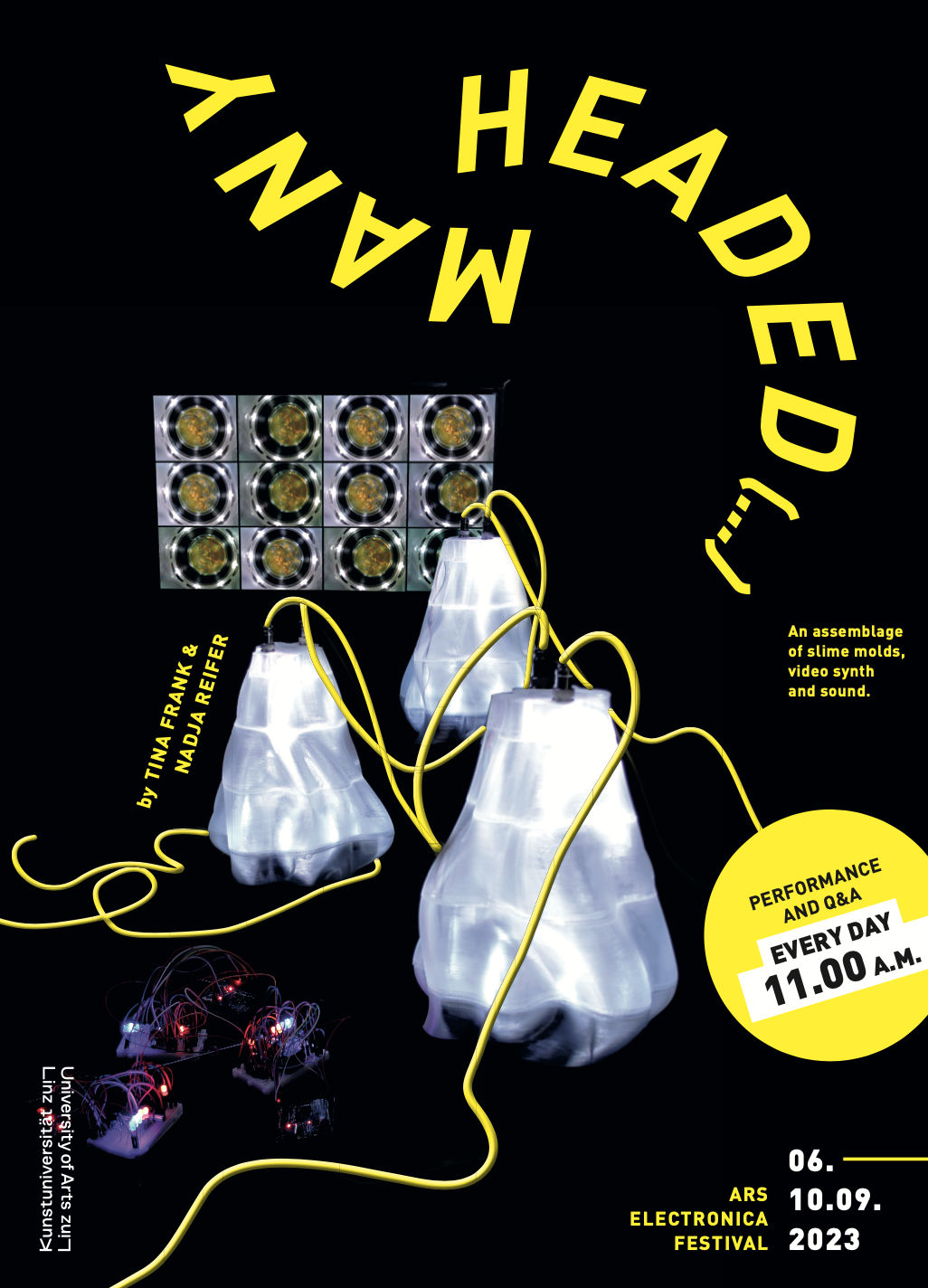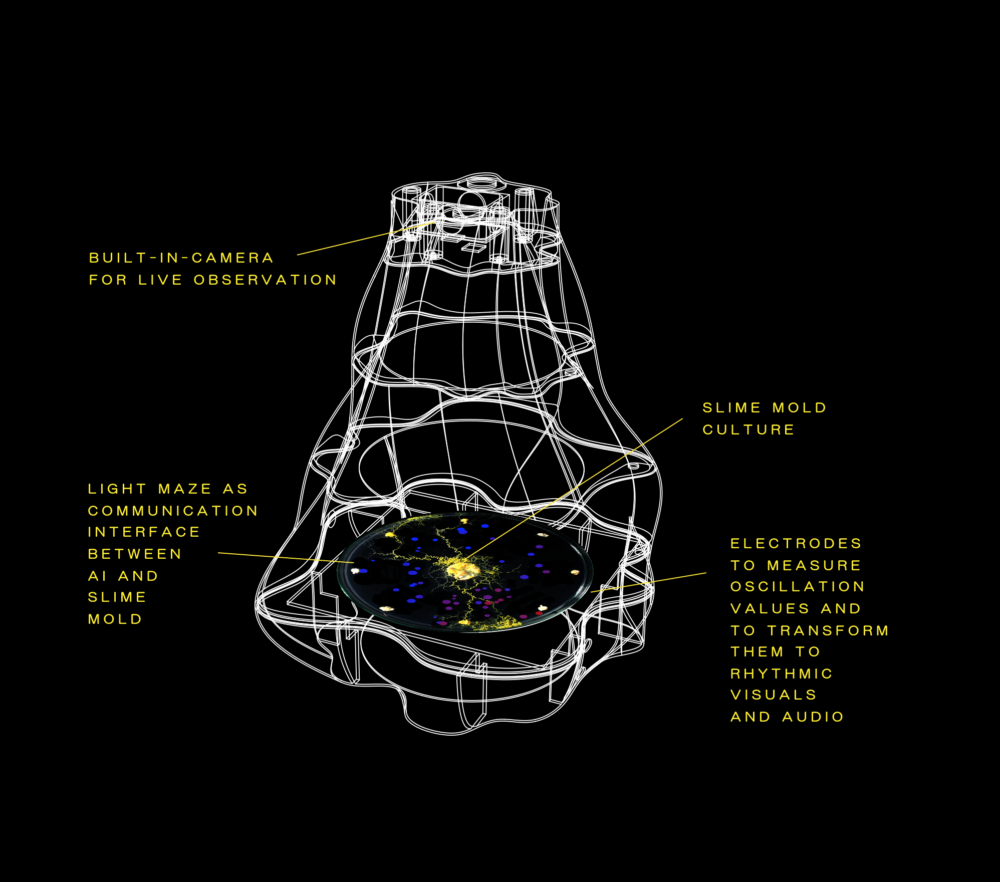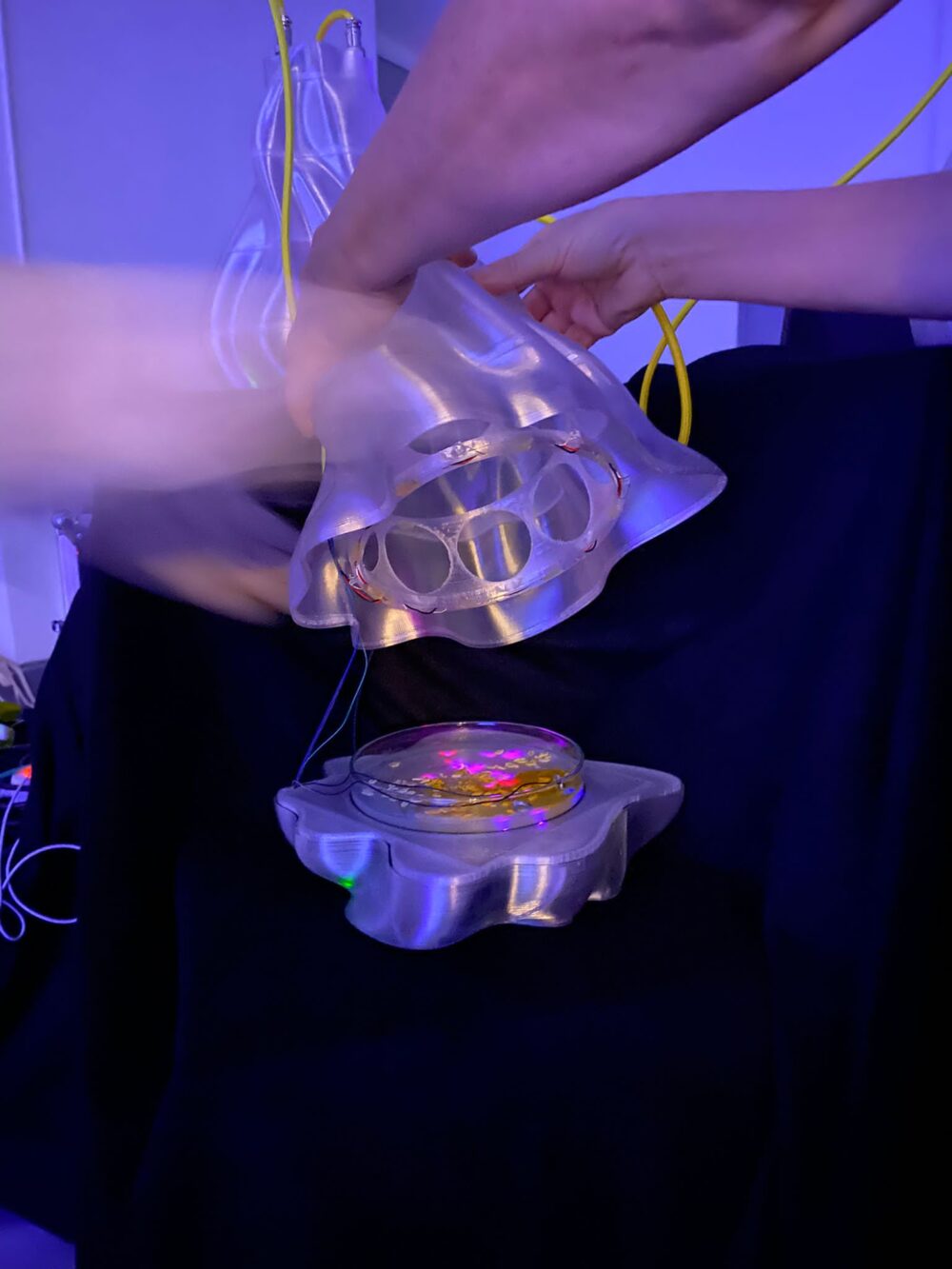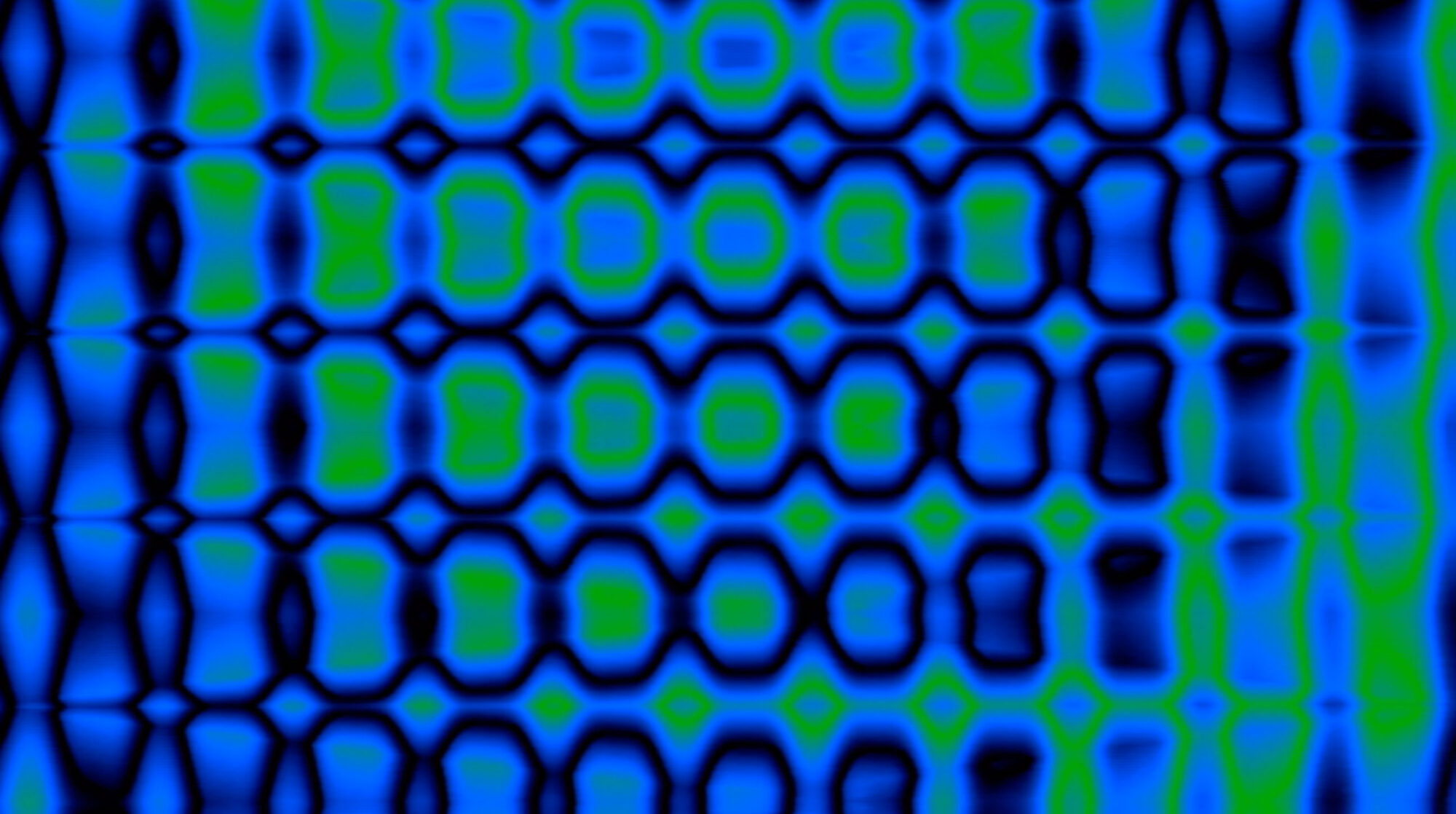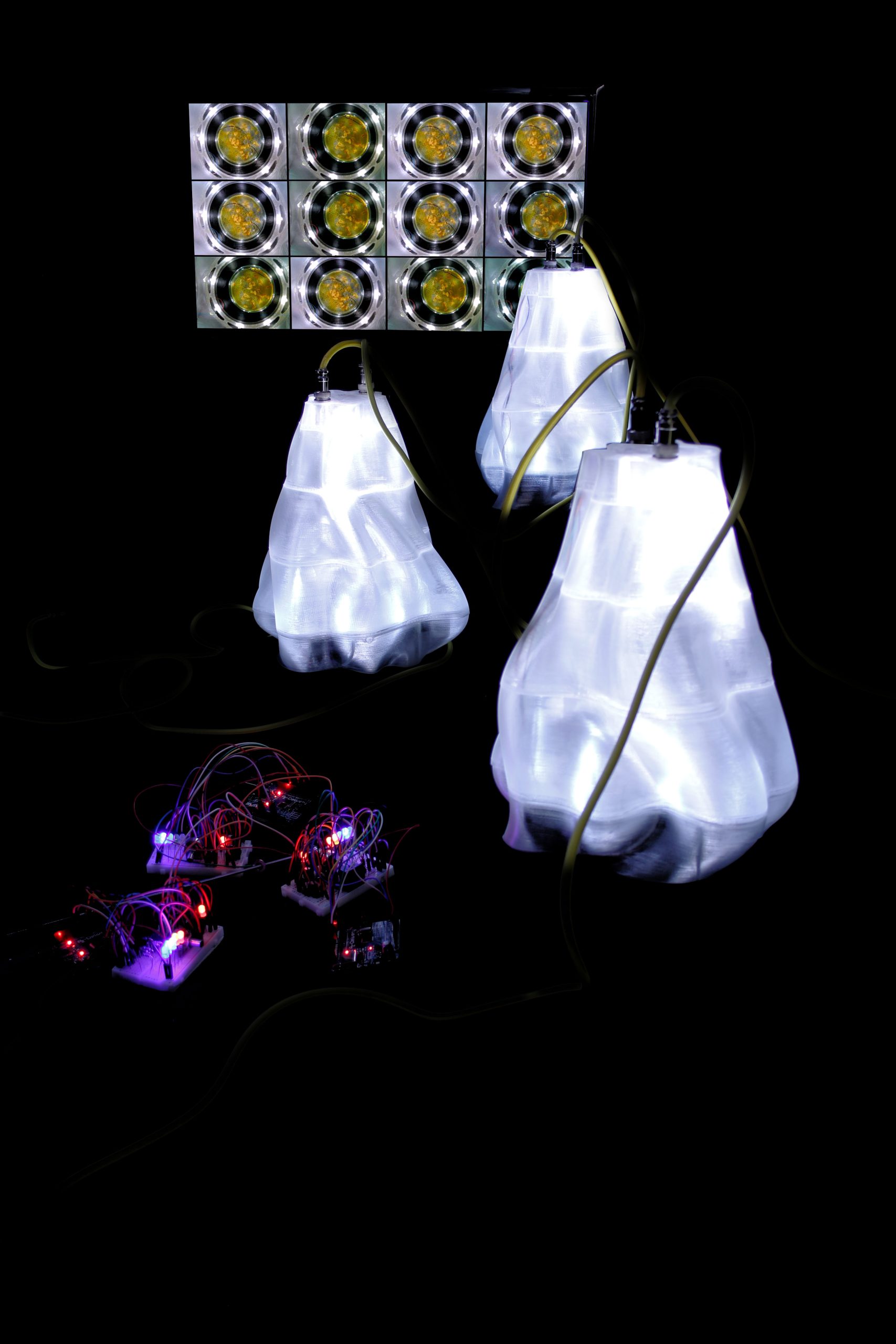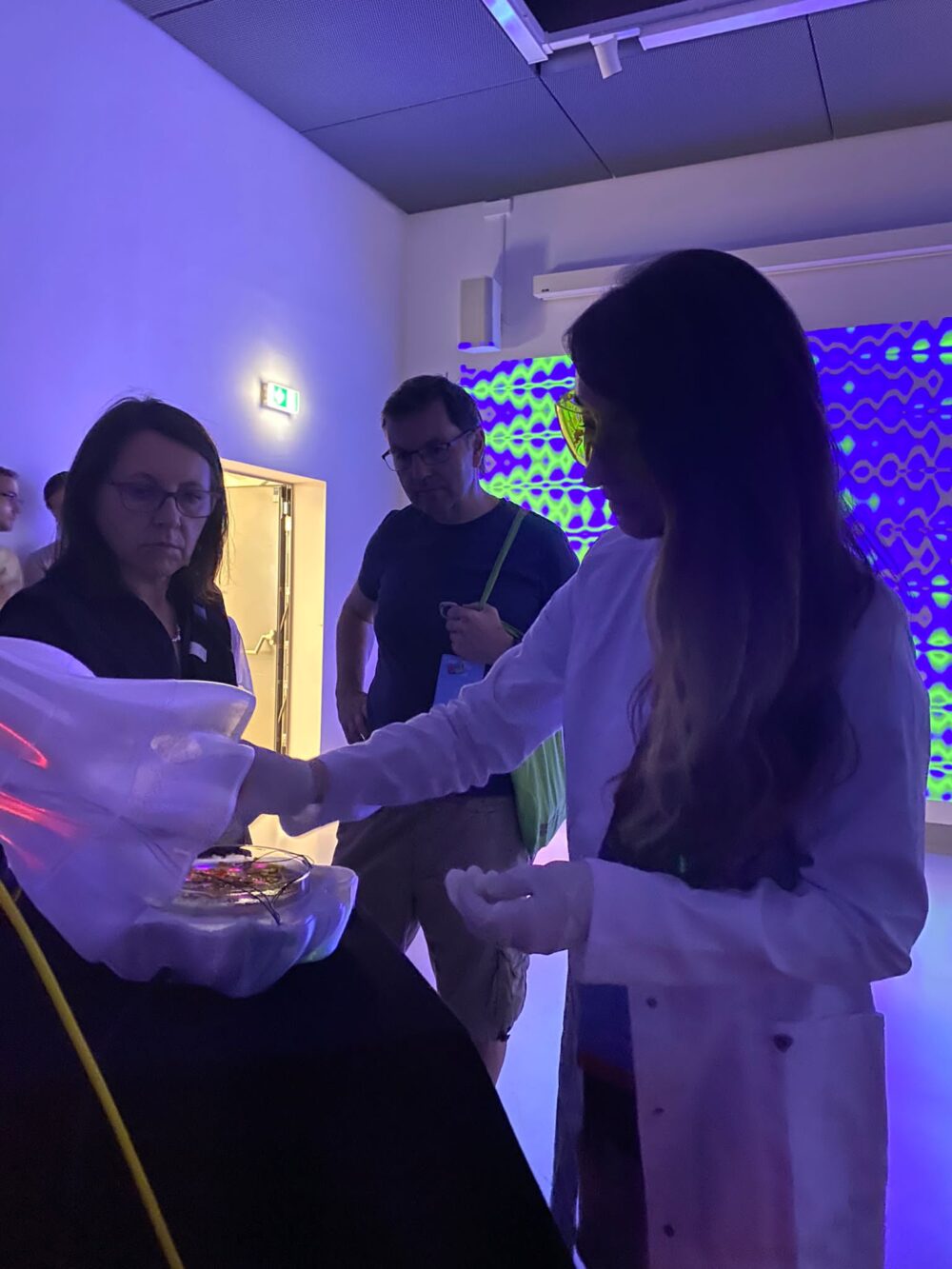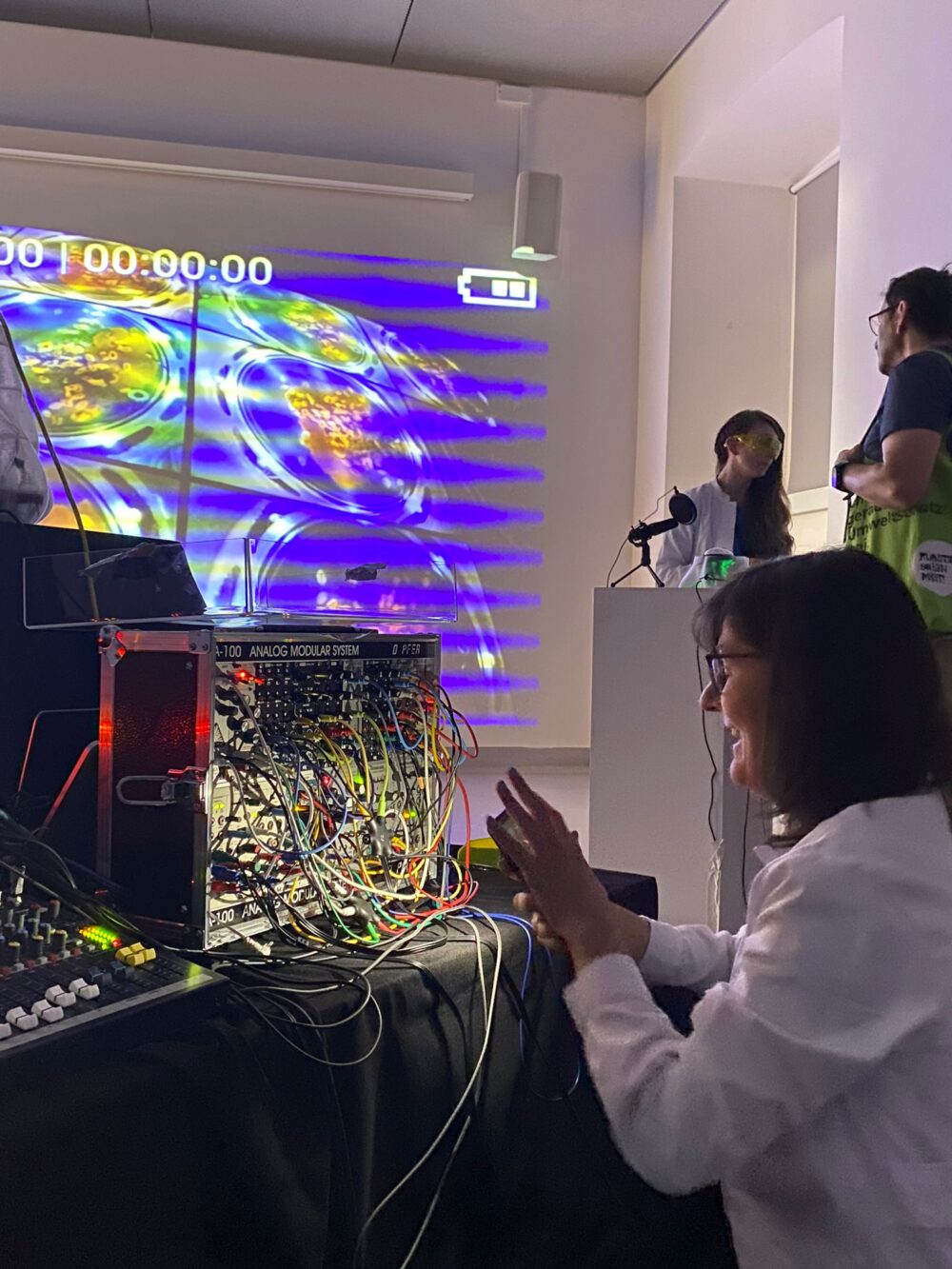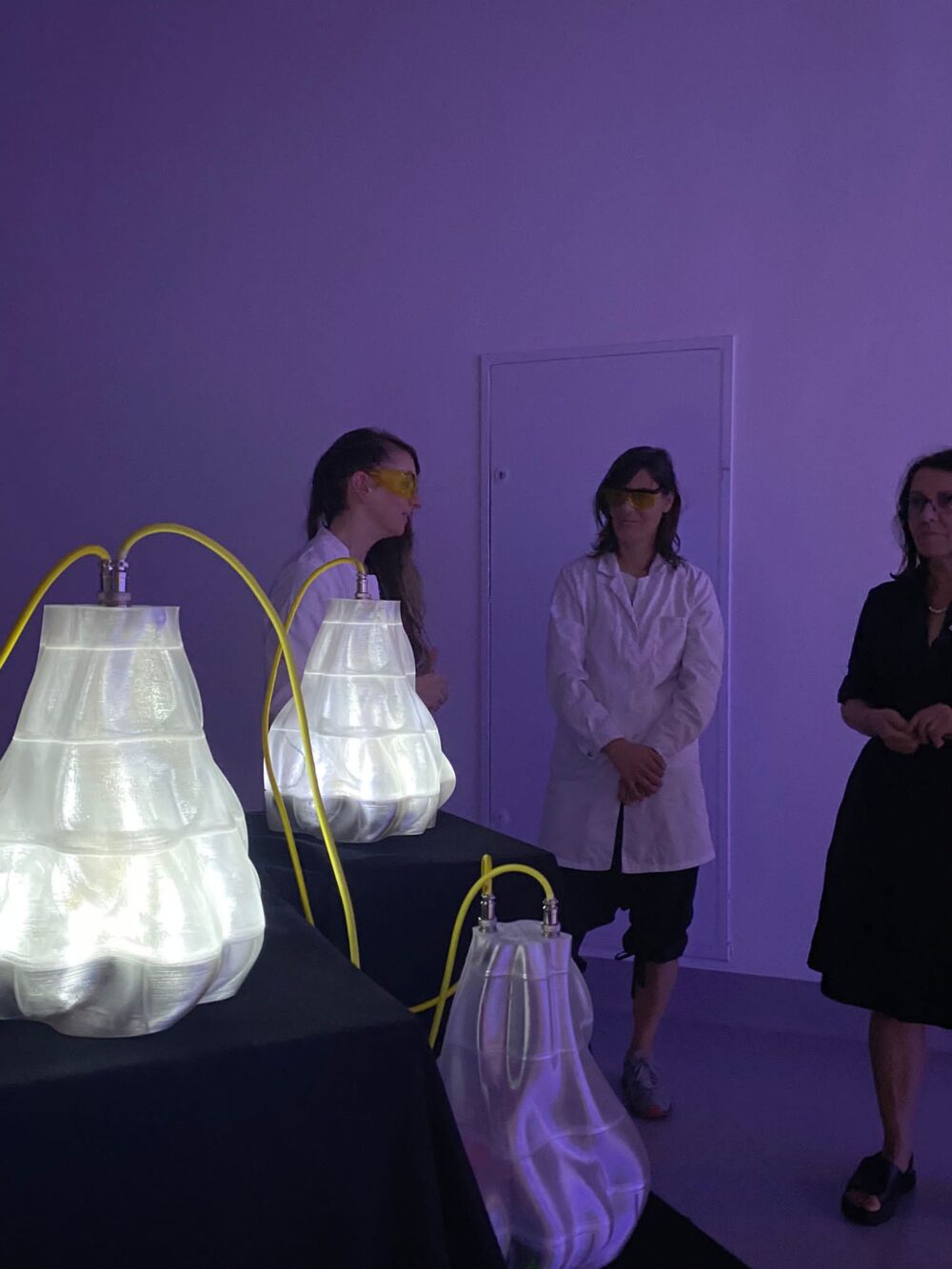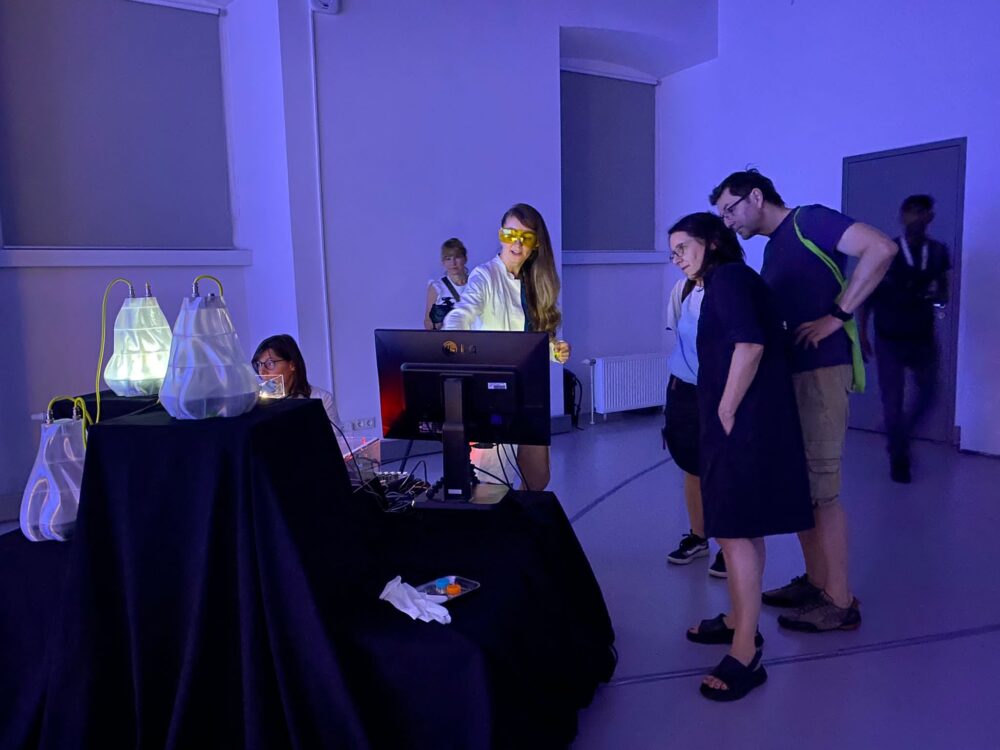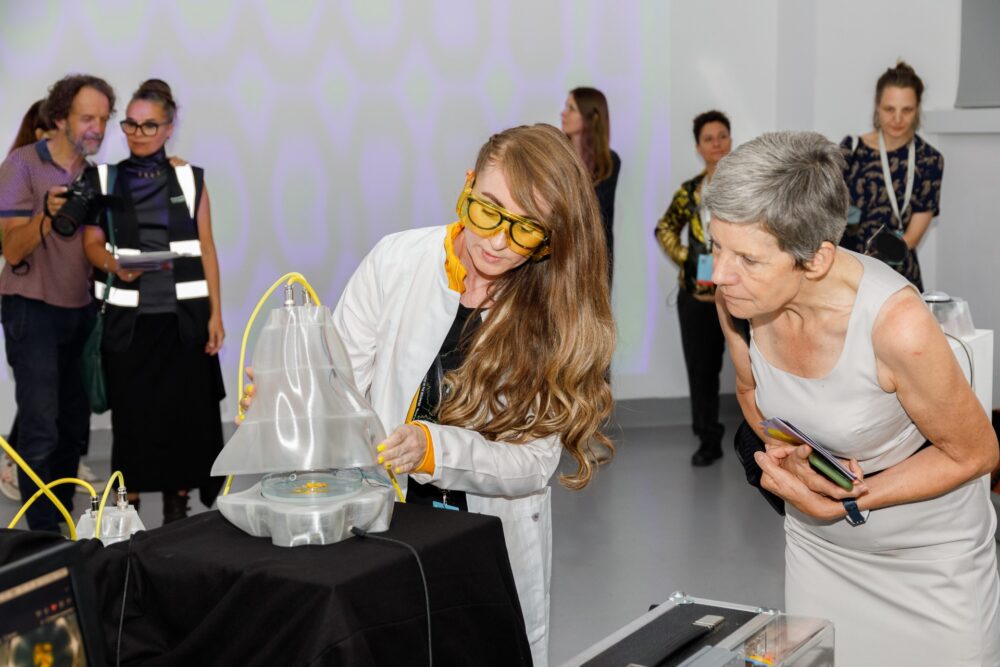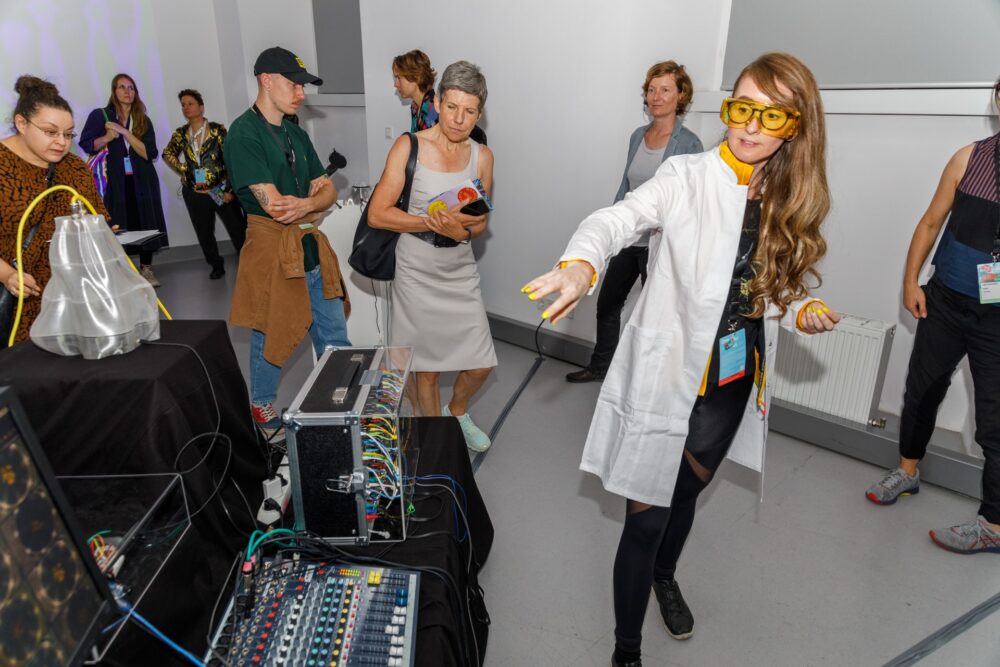Many headed (…) – Ars Electronica 2023
An installation by Tina Frank and Nadja Reifer, 2023
We are no longer aware of how diversely interconnected our bodies and our being are with other entities of the environment. This results in an apparent empowerment of humans over everything non-human. The installation many-headed (…) attempts to make the influence of various many-headed cellular organisms, which are called slime molds, tangible through different materials and media. Thereby creating an meditating rhythmic atmosphere that allows to reconnect with other entities.
Visitors enter a dark space permeated by sound and containing two visual highlights. In the center, one finds a vibrant assemblage of machines, media apparatuses, and luminous translucent bioreactors containing various slime mold cultures. Those bioreactors each contain a light maze generated by a machine learning system. These mazes represent the human perception of the critters virus, forest and AI, which were generated by a sentiment analysis of different posts on the Internet. Since the slime mold reacts to different colors of light, this should represent a way of communication with the slime molds. Its growth on the light maze is finally transformed into music via biodata signification, so actually via measurement of the surface oscillations of the slime molds.
The installation attempts to question the belief in the superiority of humans in order to propose to locate humans alongside other living beings in a shared ecosystem. We want to engage with this perspective and re-connect our own thinking by adopting an empathic attitude towards other actors by caring for them and their environment. There was a daily sharing & caring performance and Q&A. ❤️
Special thanks to: Physarum Polycephalum, Martin Zeindl @m.zeindl, Andre Zogholy @andrezogholy, Sofia González @sofi_govi, Alexandra Samandar
credits: Alexandra Kraler, Kunstuni Linz/Mark Sengstbratl
date
2023 / Installation with slime molds, AI, analog visual synths and human agency
role
conception / research / text / layout / design
context
PhD thesis, Ars Electronica 2023

